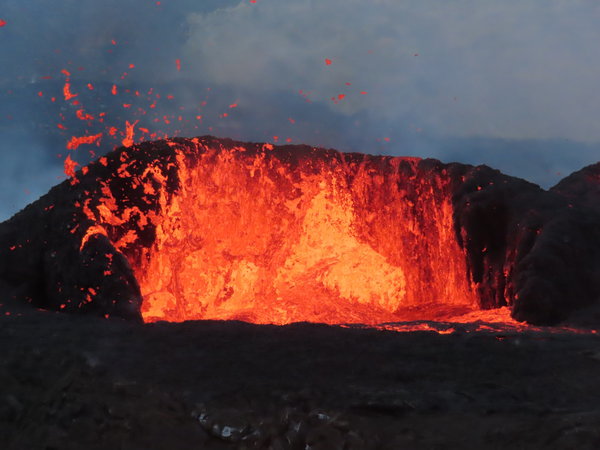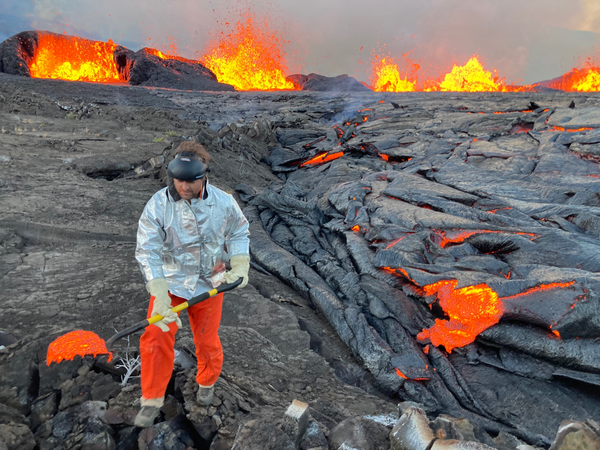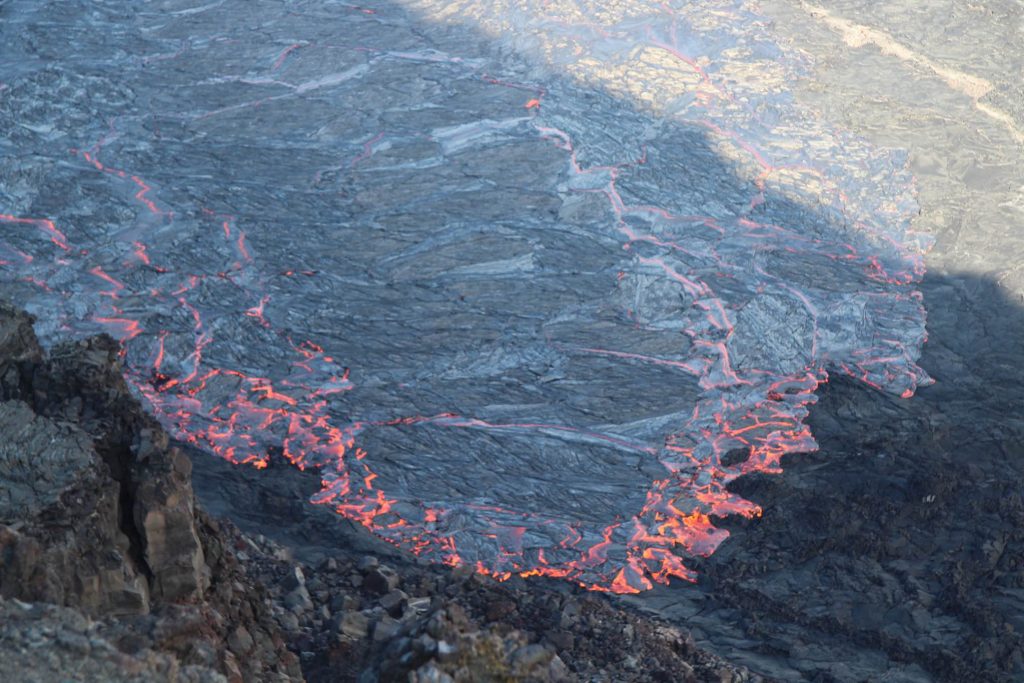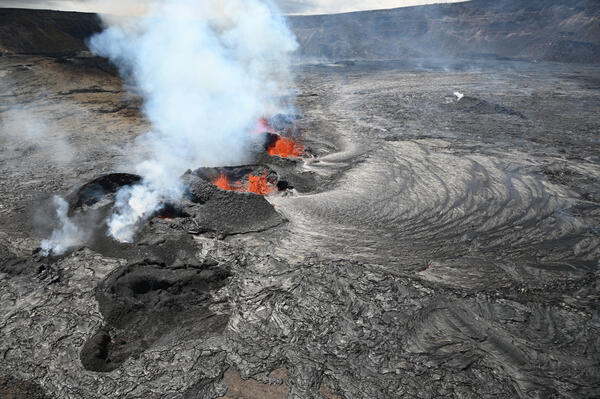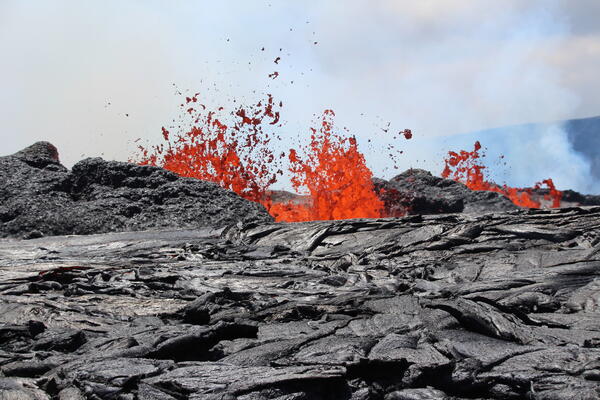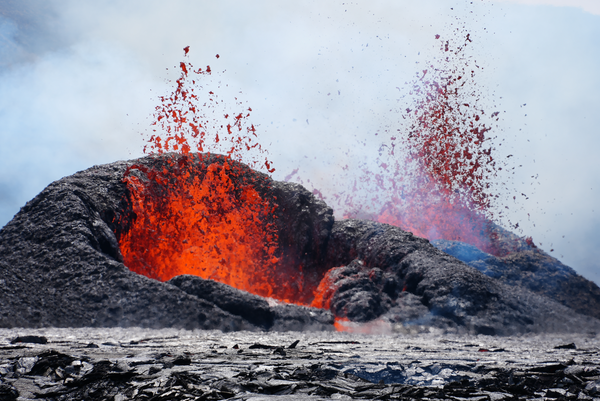Kīlauea eruption daily update: Kīlauea summit is no longer erupting
The Kīlauea summit eruption that began on Sept. 10 stopped around 11:15 a.m. on Saturday, and is unlikely to restart.
The U.S. Geological Survey’s Hawaiian Volcano Observatory said Sunday that no unusual activity has been noted along Kīlauea’s East Rift Zone or Southwest Rift Zone.
The eruption of lava from the fissure vents on the downdropped block of Kīlauea’s summit caldera stopped around noon on Sept. 16, and HVO said there was no observable activity anywhere overnight or this morning.
On Saturday morning, HVO field crews reported that active lava was no longer flowing onto Halemaʻumaʻu crater floor and was restricted to a ponded area north of the vents on the downdropped block.
The observatory said that overnight webcam views showed some incandescence across the eruption area as lava erupted over the past week continues to cool.
Field observations, supported by geophysical data, show that eruptive tremor (a signal associated with fluid movement) in the summit region decreased over on Friday and Saturday and returned to pre-eruption levels by 5 p.m. Saturday.
More information on the recent Kīlauea summit eruption is available here.
Summit tilt was mildly inflationary most of the past 24 hours. Summit seismic activity is low with very few volcano tectonic earthquakes and tremor at background levels. Sulfur dioxide (SO2) emissions have also decreased to near background levels based upon the very weak plume visible this morning.
Sulfur dioxide levels were measured at a rate of 800 tonnes per day on Saturday while the eruption was waning. Scientists at the observatory say the value is down dramatically from the 190,000 tonnes per day measured just after the onset of the eruption on Sept. 10, and is only slightly above the 100-200 tonnes typical of non-eruptive periods.
No unusual activity has been noted along the East Rift Zone or Southwest Rift Zone; steady rates of ground deformation and seismicity continue along both.
Measurements from continuous gas monitoring stations downwind of Puʻuʻōʻō in the middle East Rift Zone—the site of 1983–2018 eruptive activity—remain below detection limits for SO2, indicating that SO2 emissions from Puʻuʻōʻō are negligible.
However, levels of volcanic gas (sulfur dioxide and carbon dioxide) can remain locally hazardous even though Kīlauea is no longer erupting.
Significant hazards also remain around Halemaʻumaʻu from crater wall instability, ground cracking, and rockfalls that can be enhanced by earthquakes within the area closed to the public. For discussion of Kīlauea hazards visit this website.
Sponsored Content
Comments





